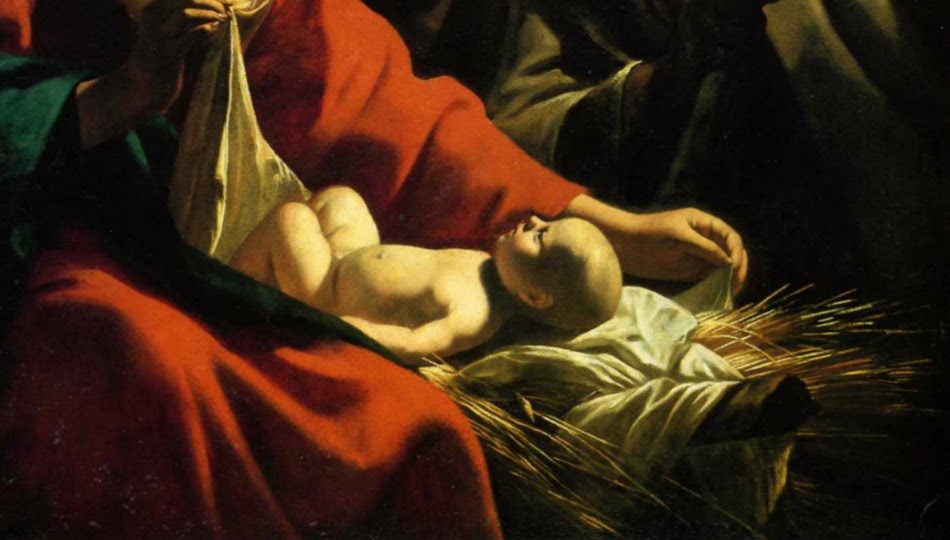From Manger to Canvas: The Nativity in Art
Emilie Callan
Tuesday, December 26, 2017

An Introduction
The early Christians approached art as a useful tool for communicating the story of Jesus and Mary and the saints. Religious art at that time is more commonly called iconography. This happened mainly because Christians desired to know more about this child who came into the world by a young woman. Mary was therefore, early on, a favoured subject in religious art. She is often depicted pointing to Jesus in her arms and she received the name “Hodegetria” meaning “she who shows the Way”, that is to Salvation. The story goes that Saint Luke painted the original icon of the Hodegetria and it was later brought to Constantinople from the Holy Land thanks to the wife of the emperor Theodosius II.The Byzantine Nativity
When images of the Nativity started appearing, they were inspired by the Infancy narratives found in apocryphal Gospels, like the one written by Saint James. His protogospel is known to have the longest account of Jesus’ infancy. His Gospel also asserts Mary’s perpetual virginity before, during, and after Christ’s birth. These gospels were not included in the official canon of scripture (the New Testament contains 27 books) approved by the Catholic Church today. Artists found inspiration in these infancy narratives to represent the birth of Jesus in icons. They focused on telling a story rather than concern themselves with having good composition or even realistic representations of each subject. This style is known as byzantine art.A Saint’s Vision
Saints and art have the power to direct our gaze towards what is beautiful, good and true. They both evangelize through the life they live and the stories they tell. In the 14th century, Saint Bridget of Sweden had a vision of the birth of Jesus. Her description of what she saw has been one of the most compelling accounts of the Nativity. It changed the way artists represented the birth of Jesus entirely. While the understanding of Jesus’ birth deepened, the style of religious art began to take a turn. It sought less to fit as many elements as possible into one frame; rather it sought to resemble more closely the saint’s vision and focus on the child Jesus.The Baroque Nativity
Despite her clear vision, artists persisted in adding meaning to their paintings through narrative devices. The birth of Jesus often took place in what looked like a broken down temple; the backdrop represented the artist’s place of origin; the moment of Jesus’ conception happened in a bourgeois home or even a bedroom; and saints, members of the clergy, or art patrons, were inserted into these works of art. In the baroque period, they were abandoned. This happened, in part, as a reaction to the Protestant Reformation. Artists played with light and movement and hoped to bring the faithful closer to the action, creating more intimacy between them and the subject.The Flying Jesus
This term is used to describe one of those narrative devices used to represent the moment of Jesus’ conception in Mary’s womb. Where, typically, one saw a dove coming down from heaven, artists replaced it with a small man “flying” towards the Virgin, holding a cross.Related Articles:
Category: Advent and Christmas, Faith Education, Mary, Reflections, Saints and Blesseds, Videos
Tag: Art, Baroque, Byzantine, Flying Jesus, Fr. Eric Nicolai, From Manger to Canvas, iconography, Nativity, Opus Dei, Saint Bridget of Sweden
Pray with the Pope Reflection – June 2025
Friday, June 13, 2025
 Fr. Edmund Lo, SJ
Fr. Edmund Lo, SJ
In this month of June, the Holy Father invites us to pray that the world might grow in compassion, that each one of us might find consolation in a personal relationship with Jesus, and from his Heart, learn to have compassion on the world.
Carlo Acutis: The Saint for Our Time
Tuesday, April 15, 2025
 Matthew Neugebauer
Matthew Neugebauer
Carlo Acutis was ahead of his time, and a part of our time. He inspires us to present the faith in creative ways, as well as to seek holiness in the joys and struggles of every day life.
Raising your child like Carlos Acutis
Friday, April 11, 2025
 Aline Haddad
Aline Haddad
Raising your child in the Christian faith is a beautiful challenge, but also a real trial in a world where digital distractions are all over. Carlo Acutis offers us and our children an inspiring example.
Is Artificial Intelligence good or bad? A new Vatican document on using AI responsibly
Monday, March 24, 2025
 Julian Paparella
Julian Paparella
What are the Church’s views on artificial intelligence? How are we supposed to think of the rapidly expanding field of AI as Christians in the world today?
Veneration of the Crown of Thorns during Lent
Friday, March 14, 2025
 Aline Haddad
Aline Haddad
The Holy Crown of Thorns was returned to Notre-Dame de Paris after the rededication in December, restoring a beloved Lenten devotion.
SUPPORT LABEL
$50
$100
$150
$250
OTHER AMOUNT
DONATE













